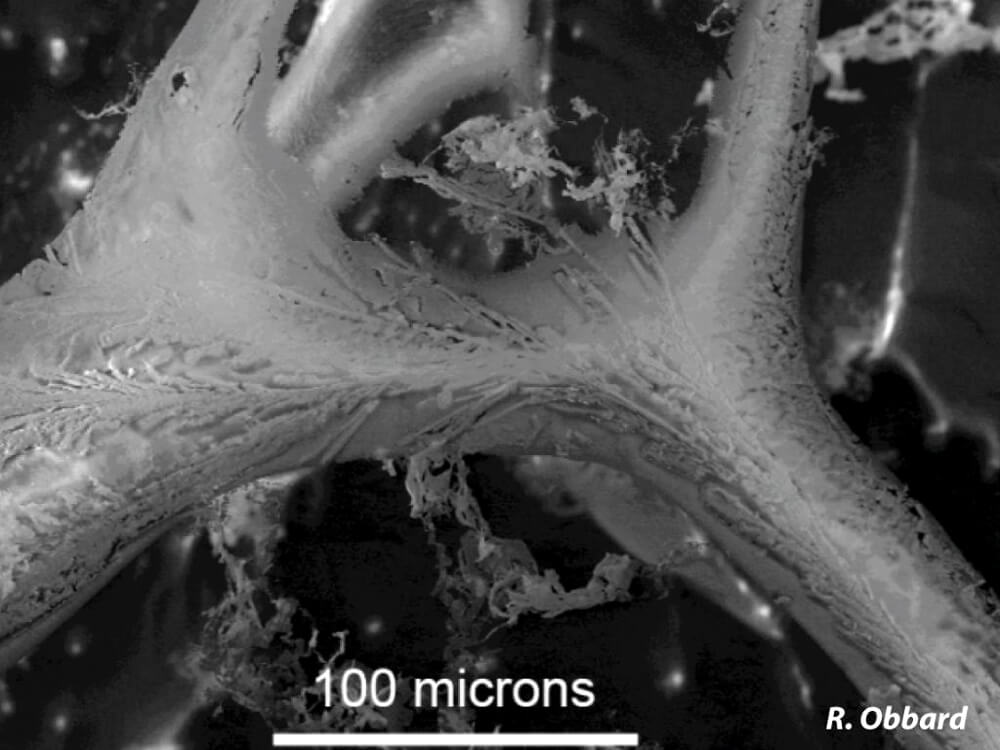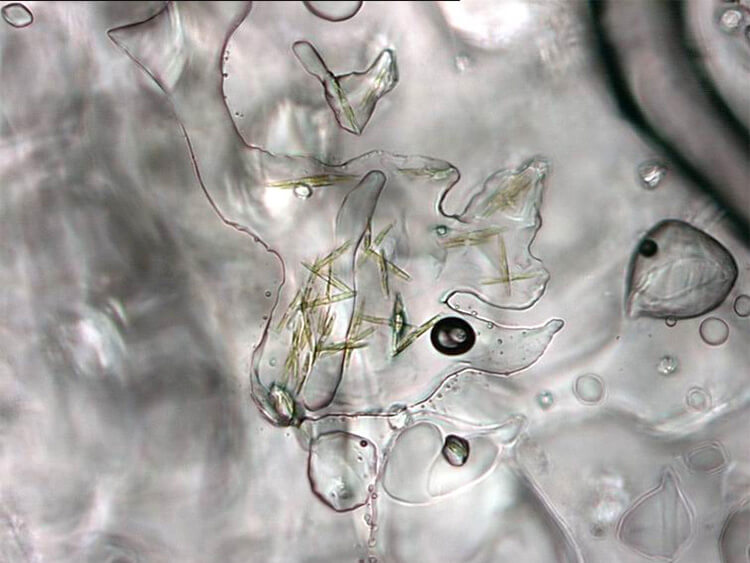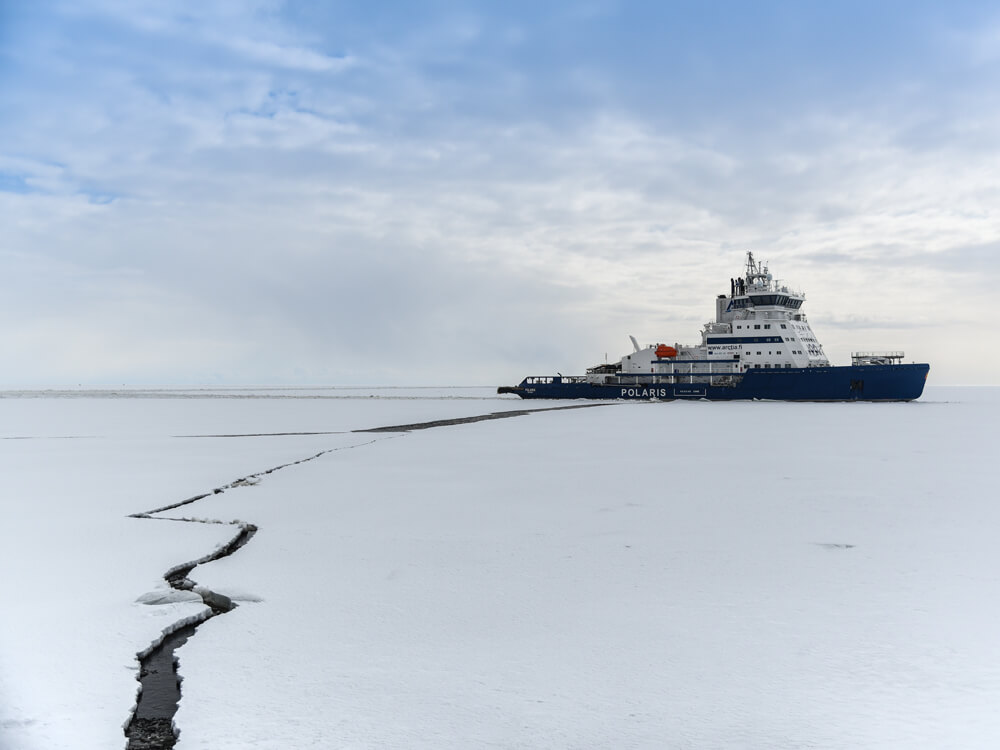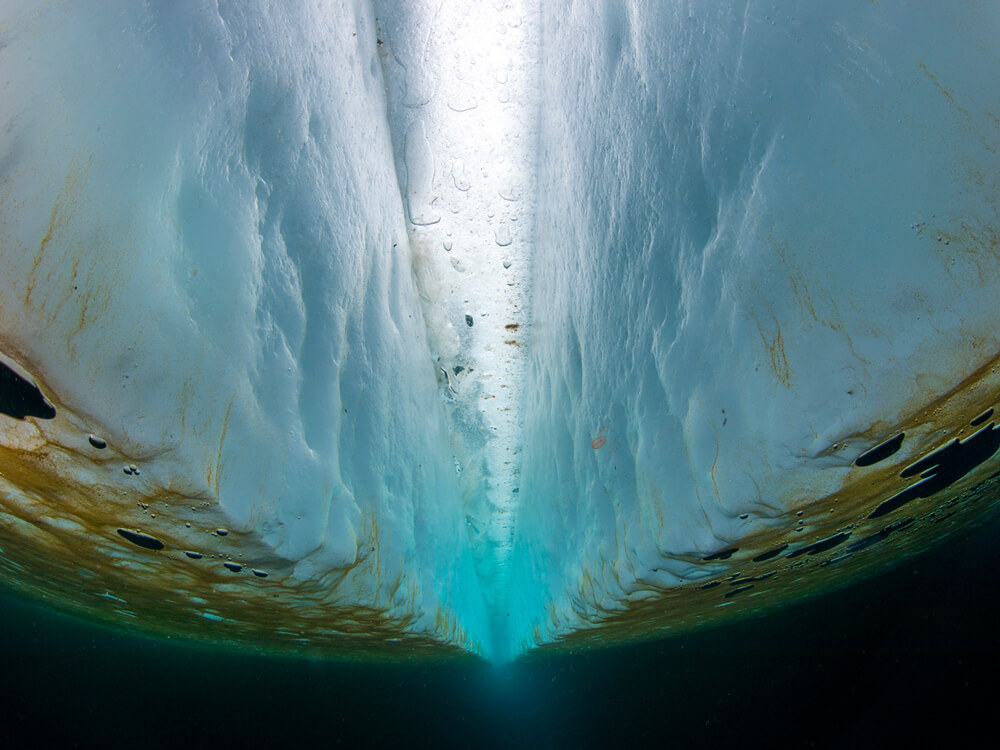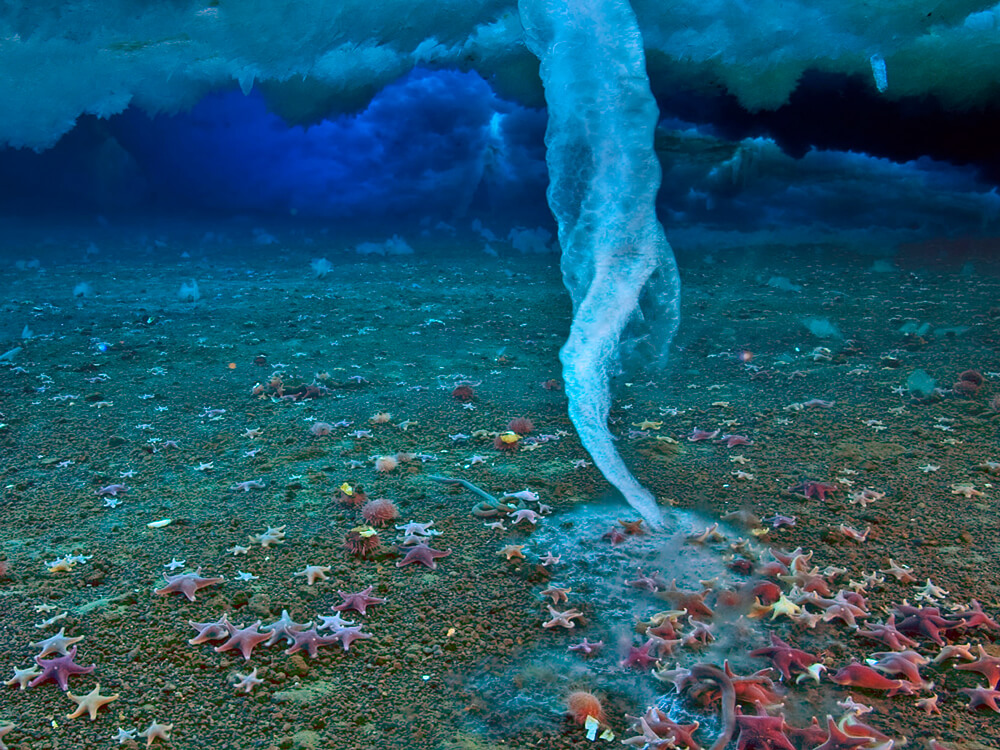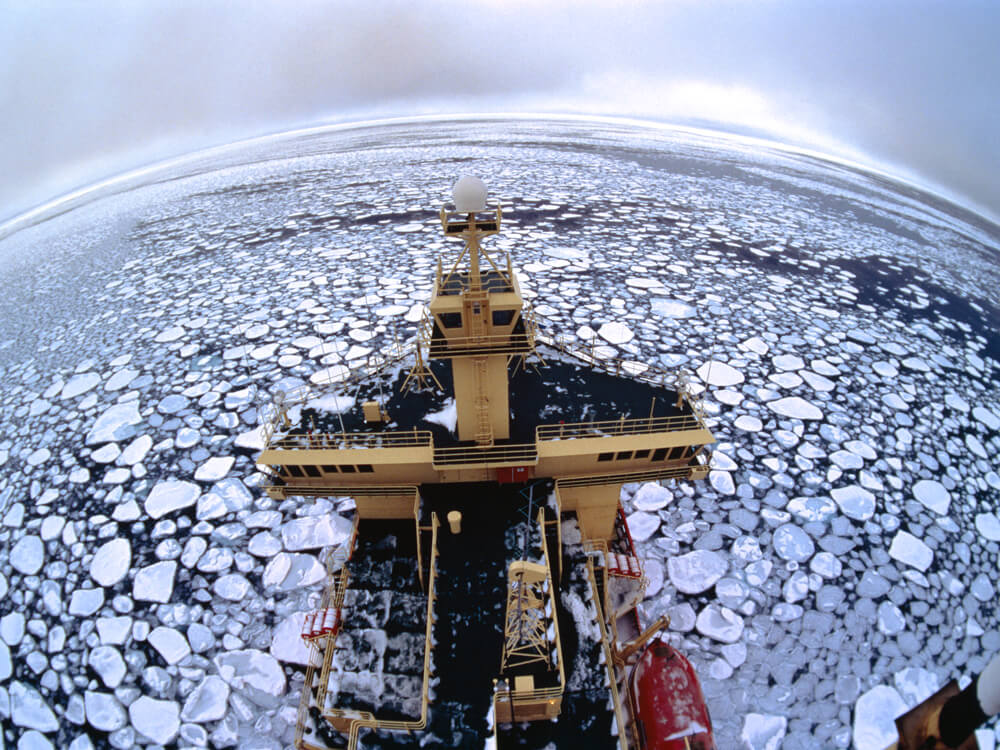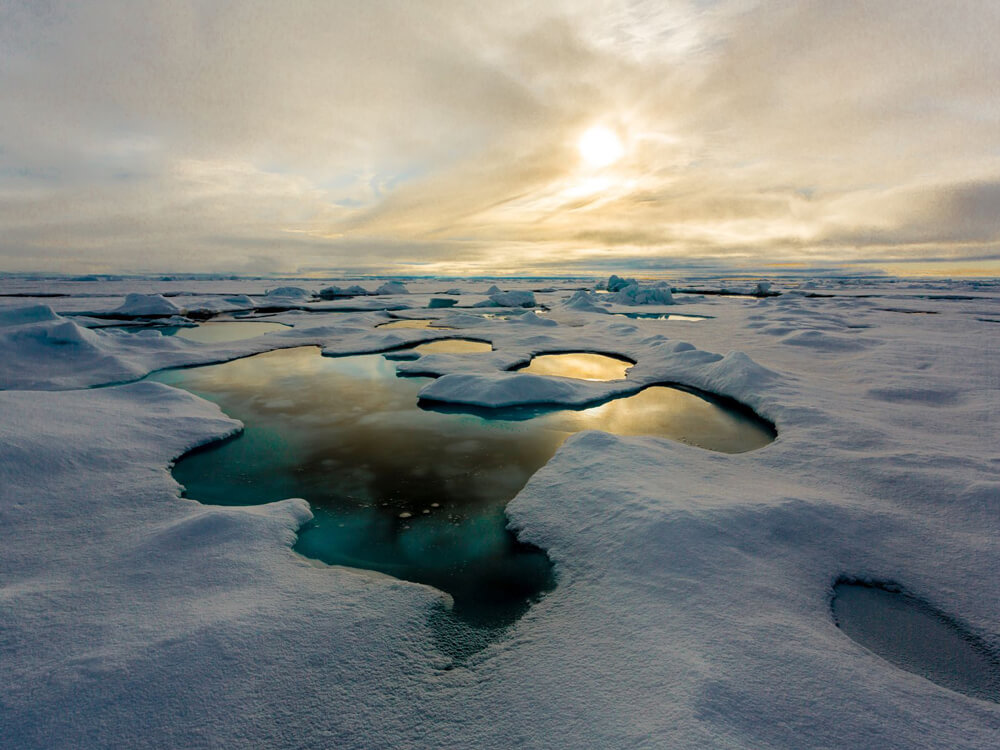Arctic sea ice likely reached its yearly minimum size on September 19 and September 23 (punctuated by a slight upturn), at its 6th lowest area of coverage in the 39-year satellite record.
This year’s sea ice minimum, reported in a preliminary announcement by the National Snow and Ice Data Center in Boulder, Colorado, is above the dramatic melting seen in 2012, but still well below the average recorded from 1981 to 2010. (The Antarctic, which is close to reaching its annual maximum of ice cover, saw a record low this time last year). Considered signs of Earth’s rising temperature, the seasonal loss of sea ice is worrisome because of the ice’s role in keeping the planet cool. With less ice to bounce sunlight back into space, the oceans warm faster. Warmer oceans, in turn, mean less ice.
It’s easy to forget that the ice is also a world unto itself, says Kevin Arrigo, a biological oceanographer at Stanford University. He’s concerned about changes to the active ecosystems hidden in the ice, and to the ice itself, which forms surprisingly complex and varied structures.
“The biggest misconception is that it’s just too cold and inhospitable and that nothing could possibly live there,” Arrigo says. But while the sea ice hugging the planet’s poles may look like a vast expanse of nothingness, abundant life is found inside and just underneath. Even at its historic record low in 2012, Arctic sea ice formed a habitat with a surface area close to twice the size of Mexico. At its lowest, Antarctic sea ice remains nearly the size of Argentina. Click on the slideshow to explore the hidden worlds in sea ice.





